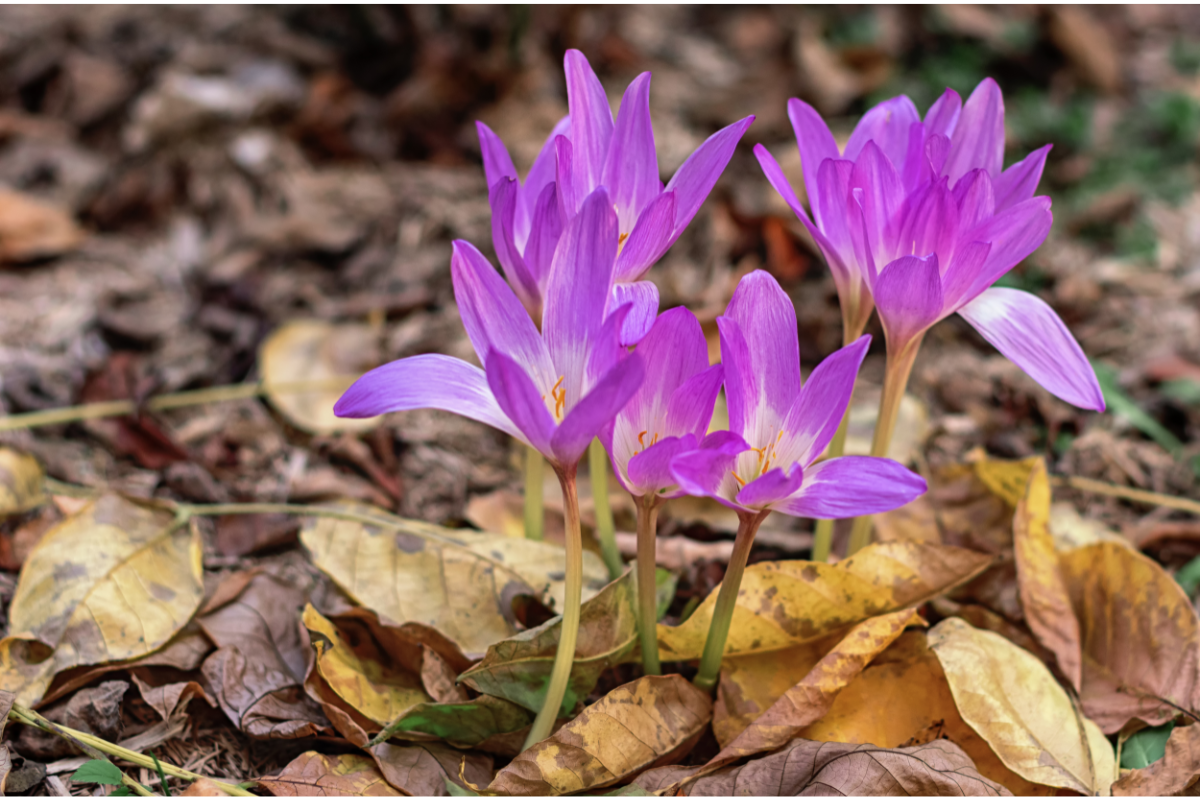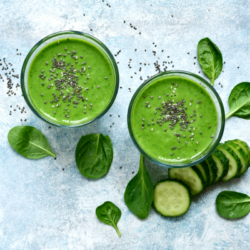Poisonous plants are a legitimate concern for gardeners, parents and nature lovers alike. Although plants beautify our environment, some can pose a threat to human and animal health. This article looks at the most common plants at risk, the symptoms of poisoning to look out for and preventive measures to protect your family and pets. Whether you’re a keen gardener or just curious about plants, knowing about these risks and taking precautions is essential for a safe experience of nature. Let’s delve into the world of poisonous plants and find out how to identify them and manage them responsibly.
Understanding poisoning
In France, plant poisoning poses a significant challenge to public health. The country’s rich biodiversity includes many plants with toxic properties. These can be harmful to human and animal health. Poison control centres play a crucial role in tackling this problem. They deal with cases of poisoning and raise public awareness. Their aim is to reduce the risk of accidental exposure.
Poison control centres
Poison control centres are medical services operating in eight university hospitals in France, specialising in medical toxicology.
Poison control centres in France have two key missions. Firstly, they deal with cases of poisoning via a telemedicine unit available around the clock. Secondly, they actively contribute to health vigilance, focusing on toxicovigilance in their territories.
Teams of doctors, pharmacists and nurses work in these centres. They inform health professionals and the public about the dangers associated with medicinal, industrial or natural products. These teams diagnose poisoning by telephone, offer appropriate care and provide advice on treatment.
The “Centres antipoison de France” association is dedicated to promoting the activities of these centres. It encourages exchanges and collaboration between its members and supports the field of toxicology.
The aim of toxicovigilance is to monitor the toxic effects, whether acute or chronic, caused by natural or synthetic substances. These substances may be present on the market or in the environment.
In 2006, poison control centres played a crucial role, recording almost 200,000 cases of poisoning in France. The majority of these cases were accidental, involving pharmaceutical or household products. However, a significant percentage were deliberate, linked to suicidal behaviour. Some cases unfortunately led to death, mainly among adults aged between 30 and 59.
In addition to poison control centres for humans, there are also poison control centres for animals in France. Other countries, such as Belgium, Luxembourg and Switzerland, also have their own poison control centres.
Phytolist
French poison control centres have set up local partnerships with mycologists and botanists. The aim of these partnerships is to quickly identify fungi and plants. Identification times vary. These centres base their medical treatment on the toxidromes observed.
To facilitate rapid identification, the poison centres have set up two networks: mycolists for fungi and phytolists for plants. Launched in June 2014 and January 2017 respectively, these lists distribute information by secure e-mail. Professionals identify fungi and plants using photographs, the context in which they were collected and case descriptions. When analysing cases, they consider a number of factors, including the sex and age of patients, circumstances, severity, and the genus and species of fungi and plants.
The data show that out of 8,870 patients who ingested plants, phytologists were consulted in 8.0% of cases. The average age of the patients was 8 years. They were almost equally divided between men (51.4%) and women (48.6%). The majority of intoxications were accidental (95.8%). Severity was moderate in 1.8% of cases, mild in 24.4% and non-existent in 73.8%.
The CAPTVs play an essential role in the management of various cases of poisoning, covering a wide range of toxic substances. By sharing information, they are able to call on the expertise of other centres or volunteer outside experts on dedicated lists. The main tasks of the CAPTVs are to provide an urgent toxicological response (RTU) and toxicovigilance.
Statistics on poisoning cases
ocal poisoning can be fatal. Plants defend themselves with toxic substances, and as Paracelsus pointed out,“the dose makes the poison“. Poison control centres receive more than 250 calls a day, 4-5% of which relate to plants. However, specific epidemiological data are rare.
Between 2017 and 2018, Phytoliste dealt with 1,265 cases of poisoning, mainly in summer and autumn. The network responded within 2 to 15 minutes by analysing photos. Children aged 0 to 4 are particularly vulnerable. In animals, contaminated fodder is often to blame. Data on poisoning in domestic animals, such as cats, remains limited.
Among poisoning cases, 7% are likely to be fatal, 39% remain asymptomatic, 23% are serious, and 31% cause mild digestive problems. Fatal cases, although rare, occur with the ingestion of small quantities. In 2017-2018, Phytoliste noted symptoms, mainly digestive, in 59% of cases. Accidental ingestions often result from confusion with edible plants, or sometimes deliberately (suicide attempts, use of psychotropic plants). Errors in phytotherapy are frequent, due to a lack of botanical knowledge orignorance of the risks.
To protect public health, a decree issued in 2020 requires sellers of ornamental plants to inform buyers of the potential risks. A dedicated website raises public awareness of the dangers and offers prevention advice. TheAnses has also published fact sheets on toxic plants . This is intended to contribute to the national health and environment plan to better educate people about plants affecting human health.
Circumstances of accidents
What are toxic plants?
Poisonous plants contain substances that are harmful to humans and animals, especially herbivores. These substances, located in certain parts of plants, can harm the body when ingested or brought into contact with it, depending on the dose. The toxicity of plants does not depend on their exotic origin. Ornamental plants commonly found in our homes often cause poisoning. Children’s natural curiosity exposes them to these plants in particular. In small doses, some toxic plants are used for their psychotropic, medicinal or stimulant effects.
Plants produce toxic substances to defend themselves against other organisms, thus ensuring their survival.
Of the 300,000 plant species listed worldwide, around 10,000 are toxic, or 4% of the total. In Europe, around 4% of the 12,000 plant species can cause health problems, but only 0. 4% are truly dangerous.
In mainland France, of the more than 6,000 plant species, around 300 are of varying degrees of toxicity, including around twenty that are potentially fatal. Cases of plant poisoning are still rare, but mainly affect young children, with few or no deaths reported.
Plant toxicity depends on factors such as the distribution of toxic substances, stage of development, season,altitude, genetics and fertilisation.
The main toxic substances in plants include heterosides, tannins, alkaloids, protides, mineral poisons, oestrogens, anti-vitamin factors and photosensitising substances.
What molecules are responsible for plant toxicity?
Plants, which are remarkably diverse, produce a multitude of bioactive substances that are essential to their survival. They develop these molecules, often described as “toxic”, to defend themselves against predators, resist disease and adapt to difficult environmental conditions. They can range from simple irritants to potentially lethal compounds for humans and animals.
Alkaloids
Alkaloids, nitrogen compounds of natural origin, come mainly from plants and are formed from amino acids. Their varied structures and plant origin make them invaluable in pharmacology, with a variety of applications, particularly on the nervous system, either for therapeutic purposes or as toxic agents.
Alkaloids are classified according to their chemical structure into several categories, such as diterpenic alkaloids (e.g.aconitine in wolfsbane), tropanic alkaloids (present in plants such as belladonna), alkaloids with a tropolone nucleus (e.g. colchicine in colchicum) and other types including quinolizidine, piperidine and steroidal alkaloids.
These molecules, which are often basic, react with certain reagents to produce specific reactions, such as precipitation or colouration. Their potent pharmacological activity at low doses is notable. Although often associated with acute toxicity, they have been part of the pharmaceutical industry since the 19th century, marking the beginning of chemical medicines.
The names of alkaloids generally end in“-ine” (nicotine, caffeine, morphine, etc.). Derived mainly from amino acids, they are found in complex mixtures in plants, fungi and certain animals. Some, such as strychnine oraconitine, are extremely toxic in their pure state, while others, in controlled doses, are used in medicine for their analgesic, sedative, anti-malarial or anti-cancer properties.
The term“alkaloid“, derived from the word “alkali“, refers to their basic nature. First used in the early 19th century, it marks a key stage in the development of organic chemistry and pharmacology. To date, more than 8,000 alkaloids have been identified, constantly enriching the science of natural substances.
Heterosides
Heterosides, or glycosides, are organic compounds composed of a sugar component, the glycone, and a non-sugar component, theaglycone or genin. Their toxicity and mode of action depend on the aglycone.
Cyanogens, a type of heteroside, release highly toxichydrocyanic acid (HCN) on hydrolysis. They are found in plants such as the Rosaceae (burning bush, cotoneaster, cherry laurel, etc.). These substances cause serious poisoning when plant parts containing them are chewed or damaged, releasing the HCN.
Cardiotonic heterosides, such as digitalis,oleandrin and convallatoxin, have a steroidal genin that acts on the heart muscle. They strengthen cardiac contraction, modify heart rhythm and can reduce arterial resistance. Used medically to treat certain forms ofheart failure, they present a risk of intoxication, causing digestive problemsdrowsiness, visual disturbances and irregular heartbeats.
Saponosides, another group of heterosides, have surface-active properties and produce a foam in water. Found in plants such as honeysuckle and bittersweet, their toxicity varies, but in high doses they can cause irritation, digestive or neurological disorders, or even haemolysis.
In short, heterosides are natural compounds with significant toxic potential, whose impact on human and animal health depends greatly on the type ofaglycone in their molecular structure.
Terpenes
Terpene compounds, found in many plants such as conifers, are natural hydrocarbons with a variety of structures. They can be highly toxic. They are formed from isoprenic units, following theisoprene rule, and are classified according to the number of these units.
Diterpenes (C20), found in croton and yew, have a complex and variable structure. They can cause digestive, neurological and especially cardiovascular disorders, includinghypotension and potentially fatal ventricular arrhythmias. The triterpenes (C30) found in bryone have a highly unified structure. Cucurbitacins, a type of triterpene, are particularly toxic.
Terpenes play a role in the composition of resin andturpentine. They have odoriferous properties and interact with light, contributing to the characteristics of plants such as geranium. However, their toxic potential is significant. Terpenes such as sesquiterpene lactones act as GABA antagonists, causing allergic reactions and skin irritation skin irritation.
The risk ofallergy is high among professionals exposed to plants rich in terpenes, such as chrysanthemums, daisies or artichokes. Allergies can take the form of dermatitis, stomatitis or asthma.
In conclusion, terpenes, which are essential in various biological processes and have multiple uses, present a significant potential toxicity, particularly in terms ofallergies and skin reactions. It is therefore crucial to take this risk into account when handling and studying them.
Polyines
Polyines are organic compounds characterised by one or more triple bonds in their carbon chain. They emerge from the metabolism of fatty acids and act as a defence against predators for plants. However, they are highly toxic to humans and animals.
Cicutoxin, the polyin in poison hemlock, acts as a powerful inhibitor of GABA-A receptors, causing tetanic seizures and convulsions.Oenanthotoxin, found in saffron oenotoxin, is also toxic, leading to convulsions, coma and even death.
Polyines, which often have a linear structure, have a rigidity that is useful for applications in molecular nanotechnology. They are also found in space, as in molecular clouds in the form of large anions.
The longest synthetic polyynes, manufactured in the laboratory, comprise a chain of 44 atoms with 22 acetylenic bonds. Carbyne, a hypothetical polyyne of infinite length, is envisaged as an allotrope of carbon with remarkable mechanical properties.
Natural polyynes, useful in research and industry for their medicinal properties, require careful handling because of their high toxicity. Accidental ingestion can cause serious symptoms, ranging from vagal syndrome tocardio-respiratory failure. This situation highlights the importance of vigilance when using and studying them.
Furanocoumarins
Furanocoumarins, toxic and photosensitive compounds, have a tricyclic structure resulting from the fusion of a furan nucleus and a coumarin. These substances, present in plants such as hogweed and ficus, play a defensive role against predators, but are dangerous to humans and animals.
Cicutoxin andoenanthotoxin, typical furanocoumarins, are found in hemlock andsaffron oenanth respectively. They cause serious neurological and neuromuscular disorders, leading to convulsions, coma and, in extreme cases, death.
These compounds bind to theDNA of keratin-producing cells. Under the effect of ultraviolet rays, they cause breaks in the DNA bonds, leading to serious skin lesions. Contact with them causes acute dermatitis, especially among those who handle these plants before exposure to the sun, such as market gardeners with celery between April and August.
In some fruits, such as grapefruit, furanocoumarins interfere with the absorption of many medicines. They inhibit intestinal enzymes and transporters, increasing the blood concentration of drugs and risking overdose.
Their use in cosmetics is restricted, with only very small quantities permitted in natural essences. Although used in the treatment of psoriasis, their use is sometimes controversial because of the associated risks.
In conclusion, despite their medicinal uses, the toxicity of furanocoumarins, particularly their photosensitivity and drug interactions, calls for great caution.
Calcium oxalate
Lectins
Lectins are proteins or glycoproteins that bind specifically and reversibly to osidic residues, found in certain seeds such as mistletoe and castor oil. These substances are involved in a number of important biological processes, including cell recognition, playing a key role in immune responses and infections.
These glycoproteins are found in high concentrations in dry legume seeds, cereals and other plant families, as well as in certain fungi and animals. Among the best-known lectins is ricin, extracted from the castor oil plant, which is extremely toxic. It can bind to cells and inhibit protein synthesis, making it lethal.
Lectins have the ability to bind to carbohydrates in a specific way, making them useful in various scientific and medical fields. However, their toxicity is a crucial aspect to consider. Eating foods rich in lectins can lead to serious symptoms such as vomitinghaemorrhagic diarrhoeaand, in extreme cases, shock. Some lectins are resistant to cooking and digestive enzymes, increasing the risk offood poisoning.
The presence of lectins in seeds also acts as a chemical defence for plants against insects by disrupting their digestive tract. As well as being toxic, they can cause irritation and allergic reactions in humans. They must therefore be handled and consumed with great caution, due to their high toxic potential.
Lignans
Lignans are substances of plant origin, formed by the bond between the carbons of two phenylpropane derivatives. They are notably present inspotted arum. These phenolic compounds are made up of two monolignol units, which are also used by plants to synthesise lignin, a long polymer found in the walls of conducting vessels. Lignans differ from one another in the type of bond between these two units and in post-dimerisation modifications.
Structurally, some lignans share similarities with sex hormones, enabling them to bind to oestrogen receptors. They are therefore known as selective oestrogen receptor modulators (SERMs) or phytoestrogens. What’s more, as phenolic compounds, they have antioxidant properties.
Lignans are found in a wide variety of higher plants, but their nature, location and concentration vary considerably. Plants such as sesame and flax accumulate them in their seeds, while others, such as Podophyllum peltatum, contain anti-mitotic lignans in their rhizomes, used in lung cancer chemotherapy.
Although lignan levels are generally low in most foods, flaxseed has a particularly high level. Other sources include broccoli, certain fruits, tea, coffee and the husks of certain cereals.
The role of lignans in plants is diverse. Their status as secondary metabolites and their toxic, antifungal and antibacterial properties suggest that they are involved in plants’ chemical defence mechanisms against herbivores. Their antioxidant function could also help protect plant lipid reserves. Unlike other, more potent phytoestrogens, lignans do not appear to cause major reproductive disturbances in mammals.
What are the main toxic plants?
The plant world is full of beauty and diversity, but it is also home to species whose toxicity can present a danger to humans and animals. Some plants, although attractive, contain harmful substances capable of provoking reactions ranging from mild irritation to more serious, even fatal, symptoms.
Wolfsbane
Monkshoods, from the Ranunculaceae family, are herbaceous plants, with some species, such asWolfsbane andWolfsbane, being highly toxic. These plants contain alkaloids such asaconitine, which are dangerous even in small quantities. An adult can be poisoned by 2-4 g of root.
Monkshood, or aconite faux navet, a rare but sometimes ornamental plant, has a turnip-like root and Jupiter helmet-shaped flowers. The whole plant, especially the root, is extremely toxic.Aconitine, the main alkaloid, is fatal even in small doses and can cause serious neurological and cardiovascular symptoms: tingling in the mouth, nausea, vomiting, disturbed balance and cardiac arrhythmias. Poisoning requires urgent hospitalisation, with removal of the toxic substance and administration ofanti-arrhythmic drugs.
Aconits can also cause accidental poisoning by drinking mud water or coming into contact with their sap. Historically used as poisons, they remain a major danger if confused with edible plants. It is advisable to handle them with gloves and to wash your hands after contact.
In conclusion, Aconits are dangerous because of their alkaloid content, particularlyaconitine, making all their parts potentially lethal.
Foxglove
Foxgloves, of the genus Digitalis and family Plantaginaceae (formerly Scrophulariaceae), are herbaceous plants notorious for their high toxicity. They have large leaves and flowers in clusters resembling glove fingers. These plants, often ornamental, grow in forests and on embankments.
Purple Foxglove (Digitalis purpurea), common in Europe except for the Landes and the Mediterranean region, has mauve flowers. Its leaves contain cardiotonic heterosides such as lanatosides and digitoxin. A single leaf contains 1 to 5 mg of these substances. Other species include Yellow Foxglove (Digitalis lutea) and Woolly Foxglove (Digitalis lanata), the latter being more toxic and used pharmaceutically.
Poisoning by these plants occurs after accidental ingestion, sometimes as a result of confusion with other food or medicinal plants, or for suicidal purposes. Symptoms include tingling and numbness in the mouth, nausea and vomiting, heart rhythm disorders such as bradycardia andarrhythmia, which can be fatal.
Foxgloves are among the most dangerous plants, fatal even in small doses. They must be handled with great care, and any poisoning requires urgent medical attention, often with activated charcoal and specific antidotes.
Euphorbia
Lily of the valley
Lily of the valley, or Convallaria majalis, of the Asparagaceae family, is a small herbaceous plant found in undergrowth and often grown for its ornamental value. It is characterised by clusters of white, bell-shaped flowers and two cone-shaped leaves. Despite its delicate appearance, Lily of the Valley is highly toxic.
All its parts, including the red-orange berries that appear in summer, are toxic. Poisoning can result from eating the fruit, which is symptomatic in 10-15% of cases despite its low toxin content, or from drinking water from a vase containing lily of the valley. Serious cases often result from confusing the underground parts with food bulbs, or the leaves withwild garlic.
Lily of the Valley contains irritant saponosides and around twentycardiotoxic heterosides, including convallatoxin and convallatoxol. These compounds can cause severe gastrointestinal irritation, with mouth irritation, abdominal pain, nausea, vomiting and diarrhoea. Cardiotoxic effects include heart rhythm disorders and rapid breathing, with the risk of cardiac arrest.
Rapid medical attention is required in the event of ingestion. The medical use of lily of the valley must be strictly supervised due to its high toxicity. Although used in perfumery, it should be borne in mind that lily of the valley, in all its forms, presents a potential health risk.
Colchicum
Autumn Colchicum (Colchicum autumnale), a member of the Colchicaceae family, contains colchicine, a highly toxic alkaloid, throughout the plant in concentrations of 0.1 to 1%. Poisoning, which is often fatal, occurs mainly after ingestion of seeds by children or bulbs and leaves by adults.
The lethal dose is 5g of seeds for an adult and 1.5g for a child. Symptoms of intoxication include acute gastroenteritis, bloody diarrhoea, vomiting, metabolic acidosis, cardiac disorders, liver complications and neurological disorders such as convulsions or coma. At 0.8 mg/kg, colchicine can cause bone marrow aplasia with a high risk of infection, and above this dose, cardiac failure with hypotension. Death may occur 1 to 10 days after ingestion, depending on the quantity ingested.
Colchicine is used therapeutically in doses of up to 3 mg per day. Colchicum, with its purplish-pink tubular flowers and shiny green linear leaves, grows in damp meadows. Despite its attractive appearance, all parts of the plant, especially the seeds and bulb, are highly toxic. Children are particularly at risk of poisoning from accidental ingestion of the seeds. Adults can be poisoned by mistaking colchicum leaves forwild garlic or leek. In the event of colchicum poisoning, treatment requires rapid evacuation of the toxic substance, administration of activated charcoal and symptomatic treatment to correct hydroelectrolyte imbalances.
Datura
Datura stramonium is a common plant found in wasteland and is renowned for its high toxicity. It contains tropic alkaloids, notablyatropine and scopolamine, which act as antagonists of muscarinic acetylcholine receptors. These substances produce anticholinergic and parasympatholytic effects, with both peripheral and central signs. All parts of this plant, including the leaves, flowers and seeds, are extremely toxic, even fatal.
Datura stramoine intoxication often occurs voluntarily, using the plant for addictive purposes by direct ingestion, infusion or smoking. However, unintentional cases can occur, albeit rarely, through food contamination or accidental food mix-ups.
Datura is highly toxic. Consuming 1 to 5 flowers or around 100 seeds can cause serious symptoms. The leaves contain around 0. 25% tropic alkaloids. After ingesting Datura, symptoms include nausea, vomiting, diarrhoea, reddening of the skin, dry mouth, tachycardia, mydriasis, hallucinations and, in extreme cases, coma and death from cardiorespiratory arrest.
Growing Datura for ornamental purposes requires great caution, given its high toxicity. The seeds, in particular, present a major danger if ingested, especially by children. Treatment of Datura poisoning involves hospitalisation, removal of the toxic substance, rehydration and, if necessary, administration of sedatives andantidotes such as physostigmine.
Hemlock
Three main species of hemlock are known to be toxic: the worm hemlock, the great hemlock and the little hemlock.
Small hemlock (Aethusa cynapium), also known as ethusiasis hemlock or false hemlock, belongs to the Apiaceae family. It is highly toxic. Its similarity to parsley or chervil makes it extremely dangerous. All its parts, including leaves, flowers and fruit, contain toxic alkaloids, especiallyaethusine and traces of conicine. Ingestion causes severe symptoms: nausea, vomiting, sweating, excessive salivation, headaches, convulsions and jaw contractures. If consumed in large quantities, serious cardio-respiratory problems can lead to death. It also causes phytophotodermatitis after skin contact followed by exposure to the sun.
Great hemlock (Conium maculatum), a biennial of the Apiaceae family, has a toxicity linked to piperidine alkaloids, in particular coniine, which is distributed throughout the plant, with a higher concentration in the fruit. Its similarity to certain edible plants can lead to accidental poisoning. Symptoms of poisoning appear rapidly. They include nausea, vomiting, diarrhoea, hypersalivation, tremors, convulsions and ascending muscular paralysis. The latter can cause death by asphyxiation in less than three hours. Recognising this plant is crucial to preventing its accidental ingestion.
Spotted hemlock (Cicuta virosa), a perennial plant in the Apiaceae family, is extremely toxic, especially in damp environments. Its hollow, septate roots contain cicutoxin, a powerful alkaloid. Ingestion causes severe symptoms: nausea, abdominal cramps, intense salivation, mouth burns, convulsions, respiratory distress and cyanosis. In the event of poisoning, digestive decontamination and symptomatic treatment are necessary. Confusing this plant with edible roots such as parsnips poses a high risk.
Saffron oenanthus
Saffron Oenanthe, or devil’s turnip(Oenanthe crocata), a large, perennial, poisonous Apiaceae, grows mainly in the wetlands of western France. It can be recognised by its tubers which, when cut, exude a yellow juice. Its toxicity comes from polyines, in particularenanthotoxin, a violent poison.
The underground parts of the saffron oenanthe are often confused with edible Apiaceae, representing a high risk of poisoning.Enanthotoxin, a GABA antagonist, induces neuronal hyperactivity, rapidly causing serious symptoms. These include digestive problems (vomiting, diarrhoea), cardiorespiratory problems (respiratory failure, hypotension), mydriasis, convulsions and metabolic acidosis, leading to death in around three hours.
Several cases of poisoning have been reported, often due to confusion with edible Apiaceae. These incidents, sometimes fatal, occur during survival courses or natural meals. Between 2012 and 2018, ten cases of involuntary ingestion were reported in France. Poisoning also affects certain domestic animals, notably through the consumption of roots during agricultural work.
Emergency medical treatment for saffron oenanthe poisoning involves hospitalisation, gastric lavage and the administration ofsodium hydrogen carbonate to correct acidosis. Recognising this plant and raising awareness of its dangers are essential to prevent the risk of poisoning, given its high toxicity and potentially fatal effects.
Belladonna
Belladonna, or Atropa belladonna, a herbaceous perennial in the Solanaceae family, grows in damp woodland clearings in France, despite its rarity. It can be recognised by its tubular mauve flowers and shiny, juicy, sweet, black berries, which are highly toxic. These berries are easily confused with edible fruit, increasing the risk of poisoning in adults and children. Just 2-3 berries can poison a child and 10-15 berries can be fatal to an adult.
Its toxicity is caused by its tropane alkaloids, especiallyhyoscyamine and scopolamine. They competitively and reversibly block muscarinic acetylcholine receptors, giving a parasympatholytic effect. Symptoms of belladonna intoxication appear between 30 minutes and 2 hours after ingestion, including nausea, vomiting, flushing, dry mouth, increased pulse, mydriasis, hallucinations and central nervous system disorders. In severe cases, intoxication can lead to coma and death from respiratory and cardiac arrest.
Poisoning is often accidental, especially in children who mistake the berries for bilberries. In adults, it can occur in the context of suicide. Emergency medical treatment includes evacuation of the toxic substance by induced vomiting or gastric lavage, and administration of physostigmine as an antidote.
Although dangerous, belladonna has historical uses in medicine and cosmetics, recalling Paracelsus’ maxim that “the dose makes the poison”. Careful management is crucial to avoid fatal poisoning.
Arums
Sumacs
Poison ivy (Rhus vernix), known for its allergic reactions and skin irritations, is a plant with a high dermatological toxicity. Its unstable molecules, notably alkenyl phenols and urushiols, are powerful allergenic agents. These substances react with the nucleophilic residues of skin proteins, causing immune reactions and allergic dermatitis. Contact with sumac resin, even indirect, can trigger symptoms in over 80% of exposed individuals. These symptoms often appear after burning the plant or through contact with its fresh parts.
Poison sumac, which is found mainly in North America, is a vine that can take a variety of forms. All parts of the plant are allergenic, particularly the resin, which is released at the slightest wound. The main allergenic components are catechols and urushiols, which oxidise to form quinones and bind to proteins to form an antigenic complex.
Symptoms of allergic dermatitis, such as intense itching, inflammation and the formation of vesicles, occur between 6 hours and 4 days after exposure. The condition may spread beyond the initial areas of contact. Resin particles may remain on clothing or tools and cause further reactions. Inhalation of the resin may also cause respiratory inflammation. Initial sensitisation may lead to cross-allergies with other Anacardiaceae.
In the event of exposure, the affected areas should be washed immediately with cold water and soap to minimise the binding of allergens. To treat symptoms, apply cortisone and calamine creams. Use antihistamines and corticosteroids in severe cases. Prevention involves recognising the plant and protecting yourself when handling it or in high-risk areas.
Sources
- Licence Professionnelle CSHPSP course given by Pr Pierre Champy “UE11 – Plantes toxiques Introduction” (in French)
- Licence Professionnelle CSHPSP course given by Pr Pierre Champy “Toxic plants by contact”
- Licence Professionnelle CSHPSP course given by Pr Pierre Champy “Plants toxic by ingestion & Non-toxic fruits generating requests for CAPs”
- https://centres-antipoison.net/
- https://fr.wikipedia.org/wiki/Centre_antipoison
- https://www.vidal.fr/actualites/30482-centres-antipoison-et-de-toxicovigilance-une-double-mission.html
- https://sante.gouv.fr/archives/archives-presse/archives-communiques-de-presse/article/informations-sur-les-vegetaux-a-risque-pour-notre-sante
- http://www.plantes-risque.info
- https://www.toxiplante.fr/monographies/







